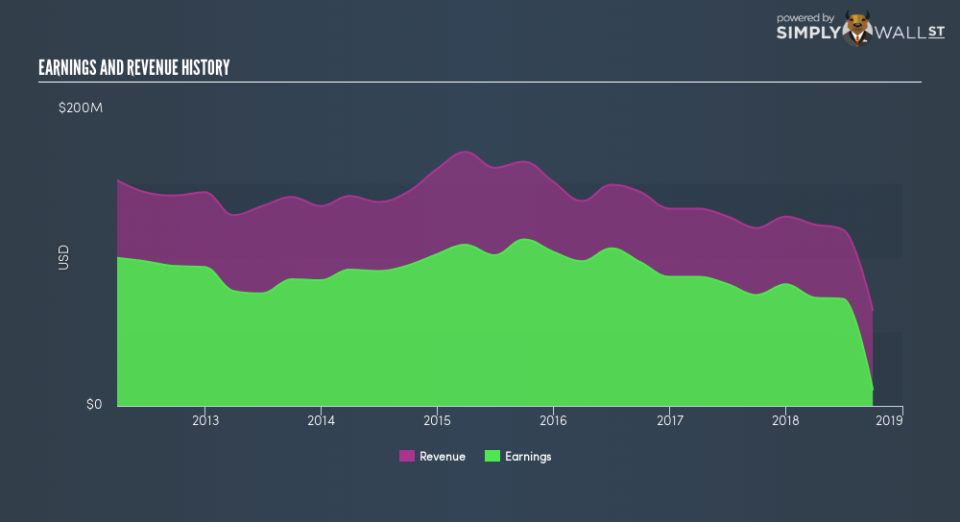Does The Banco Latinoamericano de Comercio Exterior, S.A (NYSE:BLX) Share Price Fall With The Market?

Want to participate in a short research study? Help shape the future of investing tools and you could win a $250 gift card!
If you own shares in Banco Latinoamericano de Comercio Exterior, S.A (NYSE:BLX) then it’s worth thinking about how it contributes to the volatility of your portfolio, overall. In finance, Beta is a measure of volatility. Volatility is considered to be a measure of risk in modern finance theory. Investors may think of volatility as falling into two main categories. The first type is company specific volatility. Investors use diversification across uncorrelated stocks to reduce this kind of price volatility across the portfolio. The second sort is caused by the natural volatility of markets, overall. For example, certain macroeconomic events will impact (virtually) all stocks on the market.
Some stocks see their prices move in concert with the market. Others tend towards stronger, gentler or unrelated price movements. Beta is a widely used metric to measure a stock’s exposure to market risk (volatility). Before we go on, it’s worth noting that Warren Buffett pointed out in his 2014 letter to shareholders that ‘volatility is far from synonymous with risk.’ Having said that, beta can still be rather useful. The first thing to understand about beta is that the beta of the overall market is one. A stock with a beta greater than one is more sensitive to broader market movements than a stock with a beta of less than one.
See our latest analysis for Banco Latinoamericano de Comercio Exterior
What BLX’s beta value tells investors
Looking at the last five years, Banco Latinoamericano de Comercio Exterior has a beta of 1.26. The fact that this is well above 1 indicates that its share price movements have shown sensitivity to overall market volatility. Based on this history, investors should be aware that Banco Latinoamericano de Comercio Exterior are likely to rise strongly in times of greed, but sell off in times of fear. Many would argue that beta is useful in position sizing, but fundamental metrics such as revenue and earnings are more important overall. You can see Banco Latinoamericano de Comercio Exterior’s revenue and earnings in the image below.
Could BLX’s size cause it to be more volatile?
With a market capitalisation of US$740m, Banco Latinoamericano de Comercio Exterior is a small cap stock. However, it is big enough to catch the attention of professional investors. It’s not particularly surprising that it has a higher beta than the overall market. That’s because it takes less money to influence the share price of a smaller company, than a bigger company.
What this means for you:
Since Banco Latinoamericano de Comercio Exterior has a reasonably high beta, it’s worth considering why it is so heavily influenced by broader market sentiment. For example, it might be a high growth stock or have a lot of operating leverage in its business model. This article aims to educate investors about beta values, but it’s well worth looking at important company-specific fundamentals such as Banco Latinoamericano de Comercio Exterior’s financial health and performance track record. I highly recommend you dive deeper by considering the following:
Future Outlook: What are well-informed industry analysts predicting for BLX’s future growth? Take a look at our free research report of analyst consensus for BLX’s outlook.
Past Track Record: Has BLX been consistently performing well irrespective of the ups and downs in the market? Go into more detail in the past performance analysis and take a look at the free visual representations of BLX’s historicals for more clarity.
Other Interesting Stocks: It’s worth checking to see how BLX measures up against other companies on valuation. You could start with this free list of prospective options.
To help readers see past the short term volatility of the financial market, we aim to bring you a long-term focused research analysis purely driven by fundamental data. Note that our analysis does not factor in the latest price-sensitive company announcements.
The author is an independent contributor and at the time of publication had no position in the stocks mentioned. For errors that warrant correction please contact the editor at editorial-team@simplywallst.com.

